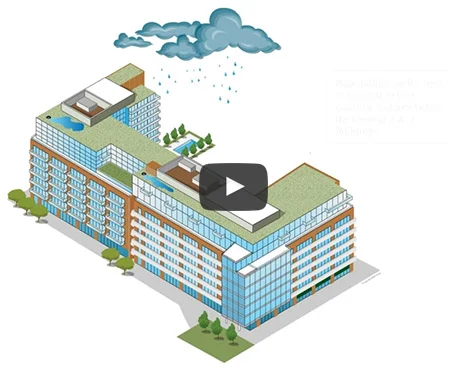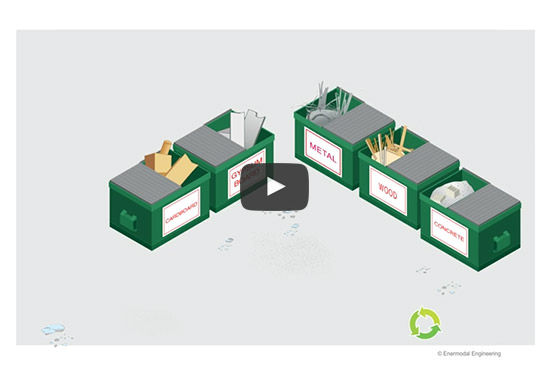LEED Central Phase 2 & 3
LEED® CENTRAL PHASE 2 & 3
The Central 2,3 condo community was designed to meet the requirements of Silver certification under the LEED® (Leadership in Energy & Environmental Design) building rating system. LEED recognizes building designs that minimize the use of energy and natural resources and reduce environmental impacts such as air and water pollution.
Urban Capital Property Group is a Toronto-based developer of high-design, environmentally sustainable residential condominiums. Urban Capital is one of Canada’s most innovative real estate development companies, with a reputation for pushing the envelope in terms of design, use of materials, and commitment to urban living. When planning a new building, Urban Capital believes that the investment made in designing an environmentally-friendly, high performance building will be off-set by long-term savings in operating costs and healthier living conditions for residents.
PROJECT OVERVIEW
Central 2,3 is a ten-storey condominium located within the Centretown Heritage District with 305 suites and 2 levels of underground parking. The development features ground level retail, amenities such as a theatre, party room, exercise room, as well as an outdoor amenity space.
- The most significant sustainable features of this residence include the following:
- an accessible green roof
- exceptional indoor air quality from in-suite ventilation systems
- airtight building and suite design to reduce air movement between suites and to reduce energy consumption
- the re-use of waste heat to pre-heat incoming ventilation air
- the careful selection of materials and paints to avoid contaminating indoor air
PROJECT TEAM
OwnerUrban Capital Property Group
ArchitectCORE Architects Inc.
LEED ConsultantMMM Group
M/E EngineerQuadrant Engineering, Smith + Andersen
Landscape ArchitectPlanning Partnership, Ferris + Associates
ContractorDoran
SUSTAINABLE SITES
The energy and environmental impacts of transportation are greatly reduced when cities have a high population density and varying land uses. The Central 3 neighbourhood has the population density that supports a variety of land uses in a small area. Because of this, residents are within walking distance of schools, a community centre, medical services, and retail shopping. Public transit, including various OC Transpo bus routes, is located within 800 metres of the building. Cyclists in the building are also provided with on-site bicycle storage.
The Urban Environment
Stormwater from rain and snow can carry pollutants into the sewer system. At Central 2,3, this environmental impact is reduced because there are no surface parking lots; all parking has been located underground. Surfaces can then be planted with vegetation or covered in porous hardscaping materials to absorb stormwater.
The urban heat island effect refers to the way cities are warmer than surrounding rural areas. This is caused by dark-coloured surfaces such as roads and roofs absorbing heat from the sun and increasing the surrounding air temperature. Reflective paving stones and green roofs, both used as Central 2,3, reduce this environmental impact.
Green Roof
Central 2,3 features vegetated rooftop areas. Not only do these vegetated rooftop areas mitigate the impacts of stormwater runoff and heat island effect, they provide residents of Central 2,3 with an exclusive urban oasis to enjoy with friends and family.
WATER EFFICIENCY
Over-consumption of water wastes one of Canada’s precious natural resources. Central 1 achieves a 46% reduction in potable water use through the use of water-efficient toilets, showerheads and faucets.
Landscaping plants are low-maintenance and native and collected rainwater is used to irrigate the site landscaping. Because most of the landscaping plants are native, the value of the site for wildlife habitat is improved.
This building will save over 7.8 million litres of water—the equivalent of 260 backyard swimming pools—per year!
ENERGY & ATMOSPHERE
Central 2,3 is expected to achieve approximately 39% energy savings compared to a conventional condo building. The building includes several energy-conserving design features:
- a very airtight building envelope with little thermal bridging (a common design problem in many buildings that causes heat loss)
- high performance glazing in all windows
- the use of heat recovered from exhaust air to pre-heat incoming ventilation air
- lighting in corridors and amenity areas controlled by occupancy sensors
- energy-efficient lighting systems controlled by occupancy sensors
- a heat pump system
Heating and cooling of the Central 2,3 condos is done by individual heat pumps located in each suite. The heat pumps either absorb heat from or reject heat to a water loop that circulates throughout the building. In winter, additional heat is provided through high-efficiency condensing boilers. In summer, additional heat is rejected by the rooftop cooling towers. During fall and spring seasons, heat can be moved around the building between suites that may require some heating and others that may require some cooling. This eliminates the need for supplemental heating or cooling at moderate temperatures and produces significant energy savings.
Building commissioning is a process of reviewing building designs and inspecting the installation and set-up of mechanical equipment. An independent commissioning agent has confirmed that the building’s heating, ventilation, and air conditioning equipment is installed and operating as designed.
MATERIALS AND RESOURCES
Creating a green building continues throughout the construction stage. Every year, 11 million tonnes of construction waste are generated in Canada. Instead, at Central 2,3, over 80% of construction waste was diverted to recycling facilities.
The design team specified and used recycled materials whenever possible. These materials, which include concrete, rebar, steel studs and drywall, comprise approximately 10% of all materials used.
Instead of transporting materials from great distances to the construction site, which contributes to increased carbon emissions, the design team chose local materials when possible. Such materials make up approximately 25% of all materials used in the construction of Central 2,3.
INDOOR ENVIRONMENTAL QUALITY
LEED buildings are not only beneficial to the surrounding environment; they’re good for building occupants as well. LEED buildings provide superior air quality, tenant control of spaces, and ample daylighting.
Many building products contain volatile organic compounds (VOCs) which have negative impacts on human and environmental health. Central 2,3 contains only low VOC paints, sealants and carpet. Indoor air quality tests were conducted before occupancy to ensure these buildings had very low levels of VOCs, formaldehyde, particulate matter and carbon monoxide.
To enable tenants to have environmental control over their own space, these buildings are equipped with operable windows and thermostats. Additionally, each suite has its own ventilation unit to provide optimal levels of fresh air while minimizing overventilation which causes energy waste.
All suites have extensive daylighting and views to the outdoors, which is beneficial for human health and well-being and decreases the need for artificial lighting during the day.
INNOVATION & DESIGN
In addition to the five main point categories available in LEED, there are five points available in the Innovation in Design category. These points reward innovative design features and additional efforts in existing categories.
The design team for Central 2,3 targeted the following innovation points:
- a green building education program that includes this website
- three-stream waste collection
- exceptional water use reduction
- 100% underground parking
- LEED Accredited Professional on the design team



